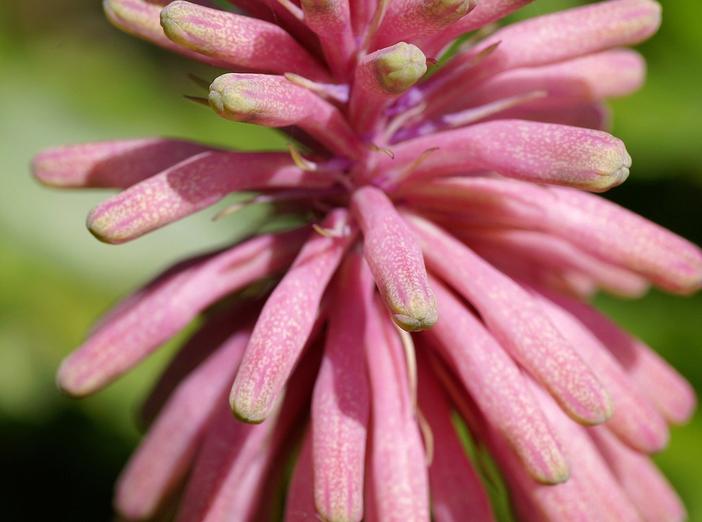Forest Lily
(Veltheimia bracteata)
Forest Lily (Veltheimia bracteata)
/
/

Dirkus
CC BY 2.0
Image By:
Dirkus
Recorded By:
Copyright:
CC BY 2.0
Copyright Notice:
Photo by: Dirkus | License Type: CC BY 2.0 | License URL: https://creativecommons.org/licenses/by/2.0/ | Uploader: Dirk Wallace | Publisher: Flickr






































Estimated Native Range
Summary
Veltheimia bracteata, commonly known as Forest Lily, is a semi-deciduous perennial bulb native to the forest margins and shaded rocky outcrops of the Eastern Cape in South Africa. It features a rosette of wavy, glossy, dark green leaves and a tall flower spike with tubular flowers ranging in color from yellowish-pink to red, blooming in winter when many other plants are dormant. The flowers are showy and attract birds, which pollinate them, leading to the production of fleshy seeds by the end of August. Forest Lily typically grows to a height of 12–18 inches (30–46 cm).
Veltheimia bracteata is valued for its winter flowering habit, providing color and interest during a season when few other plants are in bloom. It is often used in gardens for its ornamental foliage and flowers, and as a houseplant or in public spaces for a tropical ambiance. It is winter hardy in USDA zones 9-10 and has received the Royal Horticultural Society’s Award of Garden Merit in the UK. For successful cultivation, it prefers part shade, consistent moisture without waterlogging, and well-drained soil. It is generally planted in early fall and blooms until spring. While it is relatively low maintenance, it is important to protect it from excessive cold and to ensure that the soil does not become too dry.CC BY-SA 4.0
Veltheimia bracteata is valued for its winter flowering habit, providing color and interest during a season when few other plants are in bloom. It is often used in gardens for its ornamental foliage and flowers, and as a houseplant or in public spaces for a tropical ambiance. It is winter hardy in USDA zones 9-10 and has received the Royal Horticultural Society’s Award of Garden Merit in the UK. For successful cultivation, it prefers part shade, consistent moisture without waterlogging, and well-drained soil. It is generally planted in early fall and blooms until spring. While it is relatively low maintenance, it is important to protect it from excessive cold and to ensure that the soil does not become too dry.CC BY-SA 4.0
Plant Description
- Plant Type: Bulb
- Height: 1.5-2 feet
- Width: 1-1.5 feet
- Growth Rate: Moderate
- Flower Color: Pink, Green
- Flowering Season: Winter, Spring
- Leaf Retention: Semi-Deciduous
Growth Requirements
- Sun: Part Shade
- Water: Medium
- Drainage: Medium
Common Uses
Bird Garden, Border Plant, Butterfly Garden, Drought Tolerant, Potted Plant, Rock Garden, Showy Flowers
Natural Habitat
Forest margins and shaded rocky outcrops of the Eastern Cape in South Africa
Other Names
Common Names: Sand Onion, Red Hot Poker
Scientific Names: , Veltheimia bracteata,
GBIF Accepted Name: Veltheimia bracteata Harv. ex Baker